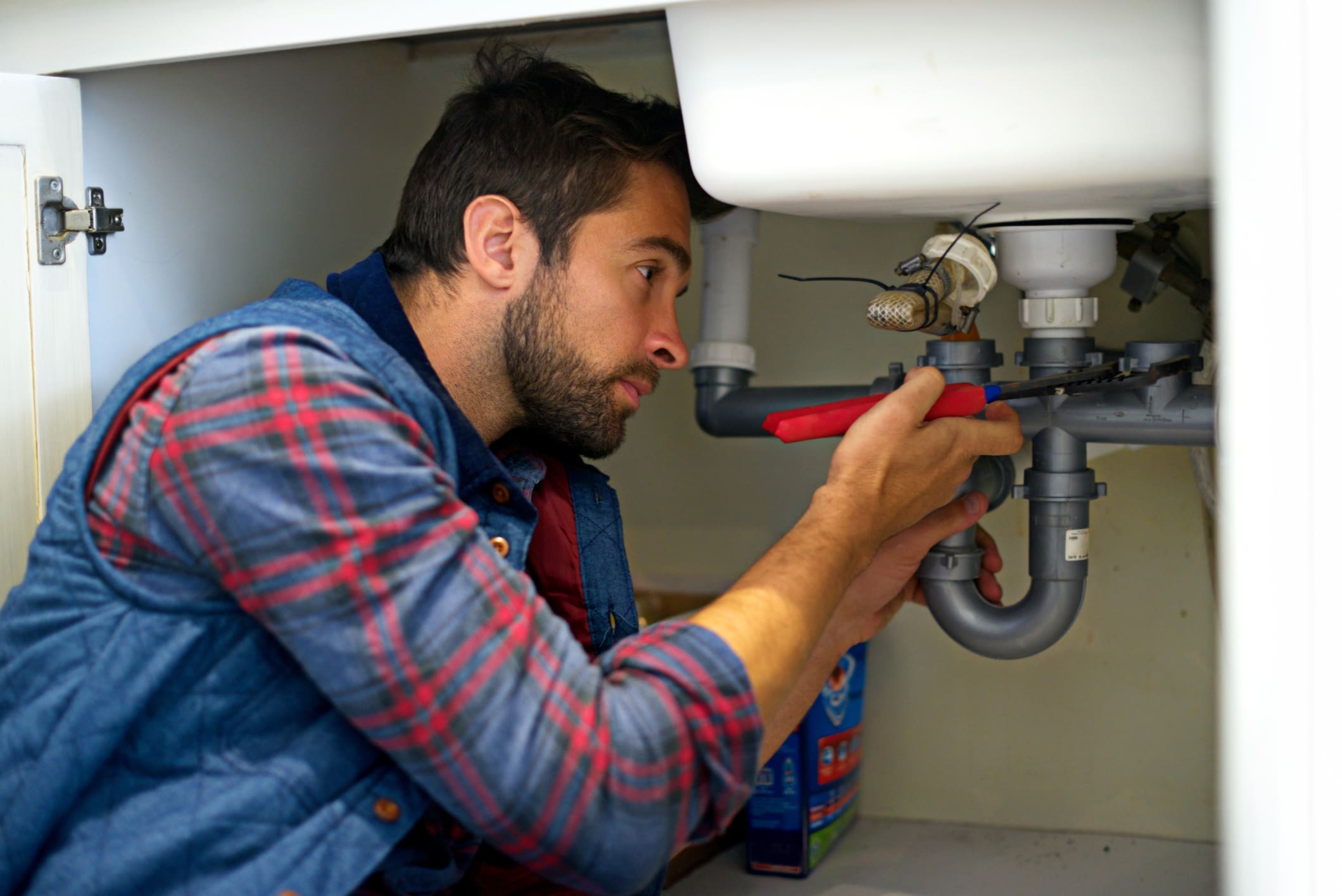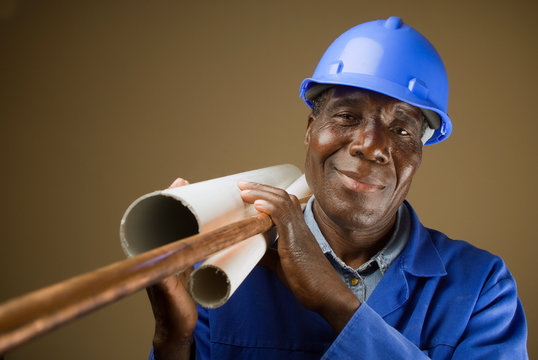Why DIY Isn’t Always Smart: When to Let a Pro Plumber Take Over
Why DIY Isn’t Always Smart: When to Let a Pro Plumber Take Over
Blog Article
Typical Plumbing Problems Every Homeowner Ought To Be Mindful Of
Property owners frequently come across a variety of plumbing concerns that can interrupt life. Typical issues consist of leaky taps, blocked drains, and running bathrooms. These concerns commonly stem from damaged parts or particles build-up. Additionally, low tide stress and burst pipelines can signify much deeper troubles. Understanding these difficulties is essential for efficient maintenance. There are other less evident worries that can develop, which necessitate closer examination.
Leaky Faucets
Dripping faucets can be an irritating hassle for property owners. These persistent drips not only develop a frustrating audio however likewise bring about squandered water and increased utility expenses. A dripping tap usually results from damaged washing machines, O-rings, or seals, which deteriorate with time due to routine use and direct exposure to water. Sometimes, the tap's interior components might be worn away or harmed, demanding a more considerable repair or substitute. Determining the source of the leak is crucial; home owners might require to disassemble the faucet to examine its parts closely. Normal upkeep can help stop leakages, including cleansing aerators and examining for indications of wear. Resolving a leaky tap quickly can save water and lower prices, making it a workable yet important job for homeowners to tackle in preserving their plumbing systems successfully. Proper attention to this usual issue can bring about an extra comfy living atmosphere.
Obstructed Drains
Lots of house owners experience the stress of stopped up drains pipes eventually. This usual pipes concern can emerge from different causes, consisting of the buildup of hair, soap deposit, food fragments, and grease. These materials can produce obstructions that hinder the flow of water, bring about slow drain or total stoppage.In kitchen areas, grease and food scraps are frequently the perpetrators, while bathrooms frequently deal with hair and soap build-up. Routine maintenance, such as using drainpipe strainers and staying clear of pouring fats down the sink, can help prevent clogs.When an obstruction does take place, homeowners may attempt to use a plunger or an industrial drainpipe cleaner as initial remedies. Nonetheless, persistent concerns may call for expert support to prevent damages to pipelines - Plumbing. Understanding the causes and prevention approaches for stopped up drains pipes can save house owners time and money, making certain a smoother pipes experience

Running Toilets
Running commodes are an usual problem that can come from various reasons, consisting of defective flappers and chain problems. The constant running not just wastes water yet also leads to increased utility costs. Resolving these concerns without delay can bring back and avoid more problems efficiency to the plumbing system.
Sources Of Running Commodes
A persistent circulation of water from a toilet can be both irritating and wasteful, frequently indicating underlying concerns within the plumbing system. One typical reason is a used flapper shutoff, which might not develop a correct seal, allowing water to constantly leakage right into the dish. Additionally, a malfunctioning fill shutoff can bring about extreme water flow, contributing to the trouble. Misaligned float mechanisms might also cause the commode to run as they fall short to manage the water degree suitably. One more possible problem is mineral accumulation, which can block parts and hinder their functionality. Determining these causes without delay can help home owners deal with the issue before it intensifies, making certain efficient operation of their pipes system.
Effects of Continual Running
Often overlooked, the effects of a continually running toilet can greatly impact both water usage and family expenses. A running bathroom can throw away approximately 200 gallons of water daily, resulting in enhanced water expenses and unnecessary source usage. This too much water use not only strains the household budget plan yet additionally adds to environmental problems, specifically in locations dealing with water shortages. Furthermore, the continuous audio of running water can be a source of inconvenience, interrupting the serenity of the home - Plumber. Long term issues might lead to even more significant pipes issues if left unaddressed, resulting in more economic worries. House owners should recognize the relevance of prompt repair work to reduce these damaging impacts and maintain a reliable pipes system
Repairing Running Bathroom Issues
Toilets that constantly run can be a discouraging issue for property owners, but identifying the reason is the primary step towards an effective fix. Typical reasons consist of a defective flapper, which may not create a proper seal, allowing water to escape right into the dish. If needed, property owners should inspect the flapper for wear and replace it. Furthermore, the fill shutoff might be malfunctioning, triggering excess water to stream continually. Readjusting or changing this component might fix the concern. Another prospective offender is a misaligned float, which can be adapted to the right height. Routine upkeep and prompt repair work can prevent running commodes, ensuring both water preservation and expense savings on utility expenses.
Low Water Pressure
Low water stress can be a discouraging experience for house owners, usually showing up as a weak stream from taps and showerheads. This problem can stem from various causes, consisting of debris build-up in try these out pipes, corroded pipes, more tips here or issues with the municipal water. House owners may originally see low tide stress in specific locations of the home, but it can intensify to a much more prevalent problem if not addressed promptly.In some instances, malfunctioning pressure regulatory authorities can also be in charge of poor water flow. Regular upkeep, such as purging the water heater and looking for obstructions, can assist alleviate these issues. It might be essential to seek advice from a specialist plumbing technician to diagnose and solve the underlying cause if low water stress lingers. Determining the source of low tide stress is essential for bring back proper water circulation and guaranteeing a practical pipes system.
Ruptured Pipes
Burst pipelines can be a major pipes issue, frequently resulting from the same elements that contribute to reduced water pressure, such as temperature changes and aging framework. When water ices up within pipelines, it expands, boosting stress up until the pipeline can no much longer have it, bring about a tear. Additionally, corrosion from prolonged direct exposure to water can deteriorate pipes, making them susceptible to bursting under regular pressure.Homeowners may discover signs of a burst pipe through abrupt water leakages, wet areas on walls or ceilings, and an unexpected rise in their water expense. Immediate action is vital; falling short to deal with a ruptured pipeline can lead to comprehensive water damage, mold growth, and expensive repair work. Regular evaluations and maintenance of plumbing systems can aid avoid this issue. Shielding pipelines in cooler locations and changing old piping can considerably decrease the risk of ruptured pipelines, safeguarding the home's pipes honesty.
Water Heater Issues
Just how can house owners identify water heater concerns before they intensify? Routine assessment and maintenance can help spot prospective troubles early. House owners must search for signs such as inconsistent water temperature, unusual sounds, or a decrease in warm water supply. Leakages or pools around the unit might indicate a breakdown that calls for prompt focus. The appearance of corrosion or sediment build-up can additionally signal the demand for maintenance.Additionally, house owners should monitor the age of their hot water heater; most units have a lifespan of 8 to 12 years. If the heater is approaching this age and showing signs of wear, it may be time to assess substitute. Normal flushing of the container can avoid debris build-up, lengthening the unit's life. By continuing to be vigilant and attending to problems immediately, home owners can stay clear of expensive fixings and guarantee their water heating unit runs efficiently for years ahead.
Sewer Line Troubles
Many property owners may run into sewer line problems eventually, influencing their pipes system's total capability. Common concerns consist of obstructions, tree root intrusions, and pipeline damage. Obstructions often result from the accumulation of oil, hair, and foreign items that block the flow of wastewater. Tree origins can infiltrate sewage article system lines, causing leaks and cracks. Furthermore, aging pipes may corrode or damage, leading to further problems (Plumber). Signs of sewage system line trouble consist of slow-moving drains, undesirable odors, and sewage back-ups, which can present wellness threats. House owners should attend to these issues quickly to stay clear of comprehensive damage and costly fixings. Normal maintenance, such as arranged inspections and cleansing, can assist stop considerable issues. In severe situations, professional treatment might be needed to repair or change damaged sections of the drain line. Knowing these prospective troubles can help property owners take aggressive actions to preserve their plumbing systems efficiently
Regularly Asked Inquiries
How Can I Avoid Plumbing Issues in My Home?
To stop plumbing problems, regular upkeep is crucial. Homeowners must examine pipes for leakages, clean drains pipes, and monitor water stress. Furthermore, educating themselves about proper use can considerably reduce the threat of future pipes issues.
When Should I Call a Plumbing Professional Rather of Fixing It Myself?
When to call a plumbing professional typically depends on the extent of the issue, figuring out. Significant leaks, relentless clogs, or strange troubles require professional assistance, making sure safety and protecting against further damage instead of taking the chance of personal attempts at fixing.
What Are the Signs of Hidden Plumbing Leaks?
Indicators of hidden pipes leakages consist of unusual water expenses, moist places on ceilings or wall surfaces, mold and mildew development, and a stuffy smell. These signs frequently recommend underlying concerns that require specialist analysis and fixing for resolution.
Just how Usually Should I Have My Pipes Evaluated?
Routine plumbing assessments are suggested each to 2 years. This regularity aids recognize potential problems early, ensuring the system stays effective and lowering the threat of costly repairs or unanticipated emergency situations in the future.
Exist DIY Solutions for Minor Plumbing Issues?

Report this page